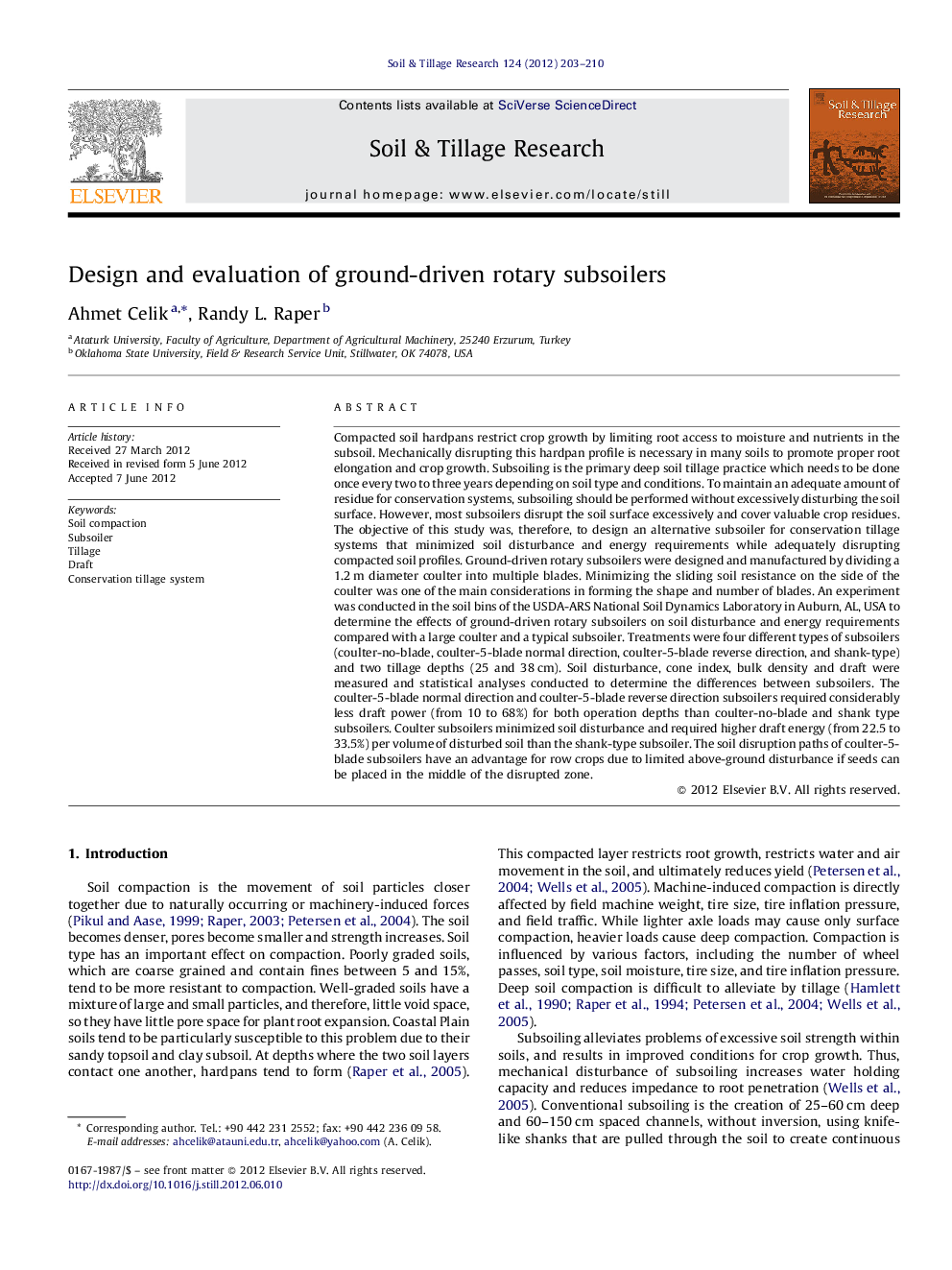| کد مقاله | کد نشریه | سال انتشار | مقاله انگلیسی | نسخه تمام متن |
|---|---|---|---|---|
| 305952 | 513063 | 2012 | 8 صفحه PDF | دانلود رایگان |

Compacted soil hardpans restrict crop growth by limiting root access to moisture and nutrients in the subsoil. Mechanically disrupting this hardpan profile is necessary in many soils to promote proper root elongation and crop growth. Subsoiling is the primary deep soil tillage practice which needs to be done once every two to three years depending on soil type and conditions. To maintain an adequate amount of residue for conservation systems, subsoiling should be performed without excessively disturbing the soil surface. However, most subsoilers disrupt the soil surface excessively and cover valuable crop residues. The objective of this study was, therefore, to design an alternative subsoiler for conservation tillage systems that minimized soil disturbance and energy requirements while adequately disrupting compacted soil profiles. Ground-driven rotary subsoilers were designed and manufactured by dividing a 1.2 m diameter coulter into multiple blades. Minimizing the sliding soil resistance on the side of the coulter was one of the main considerations in forming the shape and number of blades. An experiment was conducted in the soil bins of the USDA-ARS National Soil Dynamics Laboratory in Auburn, AL, USA to determine the effects of ground-driven rotary subsoilers on soil disturbance and energy requirements compared with a large coulter and a typical subsoiler. Treatments were four different types of subsoilers (coulter-no-blade, coulter-5-blade normal direction, coulter-5-blade reverse direction, and shank-type) and two tillage depths (25 and 38 cm). Soil disturbance, cone index, bulk density and draft were measured and statistical analyses conducted to determine the differences between subsoilers. The coulter-5-blade normal direction and coulter-5-blade reverse direction subsoilers required considerably less draft power (from 10 to 68%) for both operation depths than coulter-no-blade and shank type subsoilers. Coulter subsoilers minimized soil disturbance and required higher draft energy (from 22.5 to 33.5%) per volume of disturbed soil than the shank-type subsoiler. The soil disruption paths of coulter-5-blade subsoilers have an advantage for row crops due to limited above-ground disturbance if seeds can be placed in the middle of the disrupted zone.
► The coulter type subsoiler without blades had the highest draft power requirements.
► The shank-type subsoiler required minimum energy per volume of disrupted soil.
► The rotary-type subsoilers produced less soil disruption compared with the KMCS.
► The coulter-5-blade subsoilers disrupted soil in a cyclical manner along path of travel.
► The disruption paths of coulter-5-blade subsoilers have an advantage for row crops.
Journal: Soil and Tillage Research - Volume 124, August 2012, Pages 203–210